Are you looking for fruits that start with H? Here are 21 fruits that begin with H, along with some helpful information about each one. Have you heard of them all?
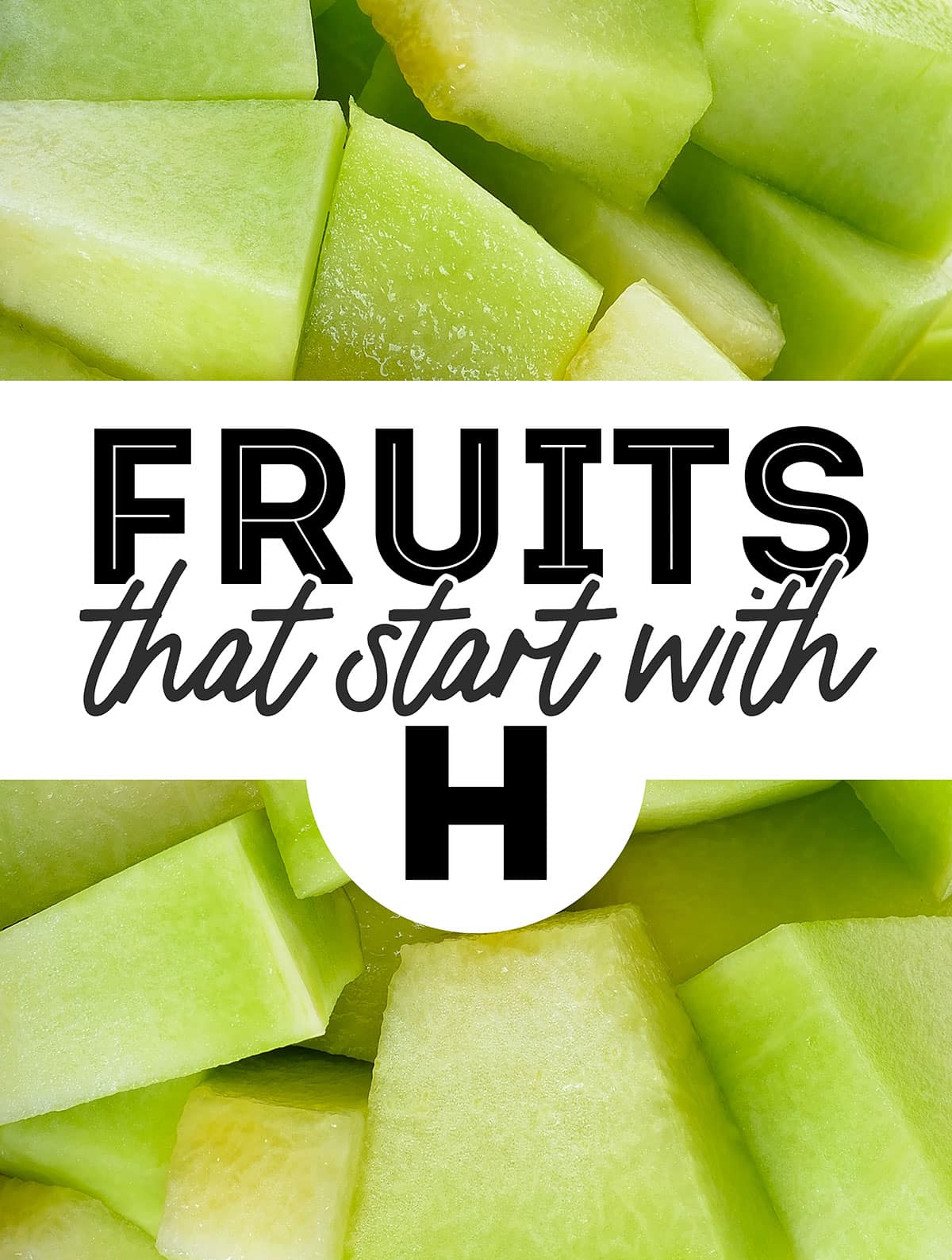
Should you soon be appearing on Jeopardy and expect Fruits That Start with the letter H to be a category, you will be all set as we list some pretty exotic fruits. Here are 21 fruits that begin with H, along with some helpful (and at times obscure) information about each one.
We can think of half a dozen reasons to want a list of fruits that begin with an H. If you are making a special recipe for say Howard, Holly, or Heather, look no further. If you are working on a school project, let these fruits that start with the letter H inspire you! And if you are looking for a vegetarian recipe featuring an H fruit, we have listed some of our favorites.
Fruity Trivia!
Which of these fruits is the most heavily grown fruit in the world? (Scroll to the bottom to see the answer…and the astonishing amount!)
A. Bananas
B. Tomatoes
C. Mangoes
D. Hazelnuts
- Hackberry
- Hala Fruit
- Hardy Kiwi
- Hawaiian Mountain Apples
- Hawthorn Fruit
- Hazelnuts
- Heirloom Tomatoes
- Highbush Blueberries
- Highbush Cranberries
- Himalayan Mulberries
- Hog Plums
- Honeyberries
- Honey Crisp Apples
- Honeydew
- Honey Locust
- Honeysuckles
- Horned Melon
- Huckleberry
- Huito
- Husk Tomatoes
- Hyuganatsu
Hackberry
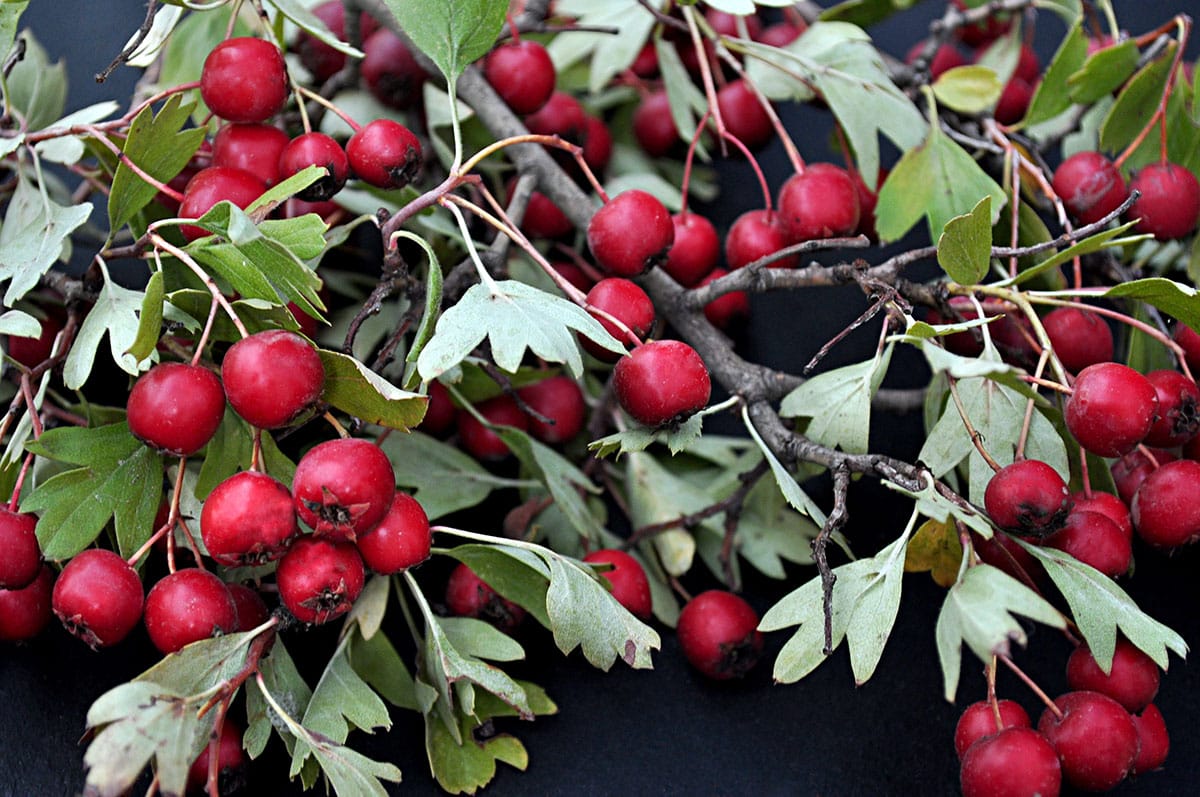
Hackberry is a North American tree and berry most of us haven’t heard of largely because it is difficult to pick. The berries are small and grow higher up in the trees making them not worth the bother to most people.
This is a shame as the berry has a sweet nutty flavor enclosed in a crunchy purple shell. Hackberries have been eaten by humans for millennia as evidenced by remnants of them found deep in cave dwellings.
Hackberries can be eaten fresh, dried, or used in cooking. They are commonly used in jams, jellies, and pies. They can also be added to cereal, baked goods, and trail mixes. The berries are purported to have anti-inflammatory and antioxidant properties, and are considered to be quite healthful.
Hala Fruit
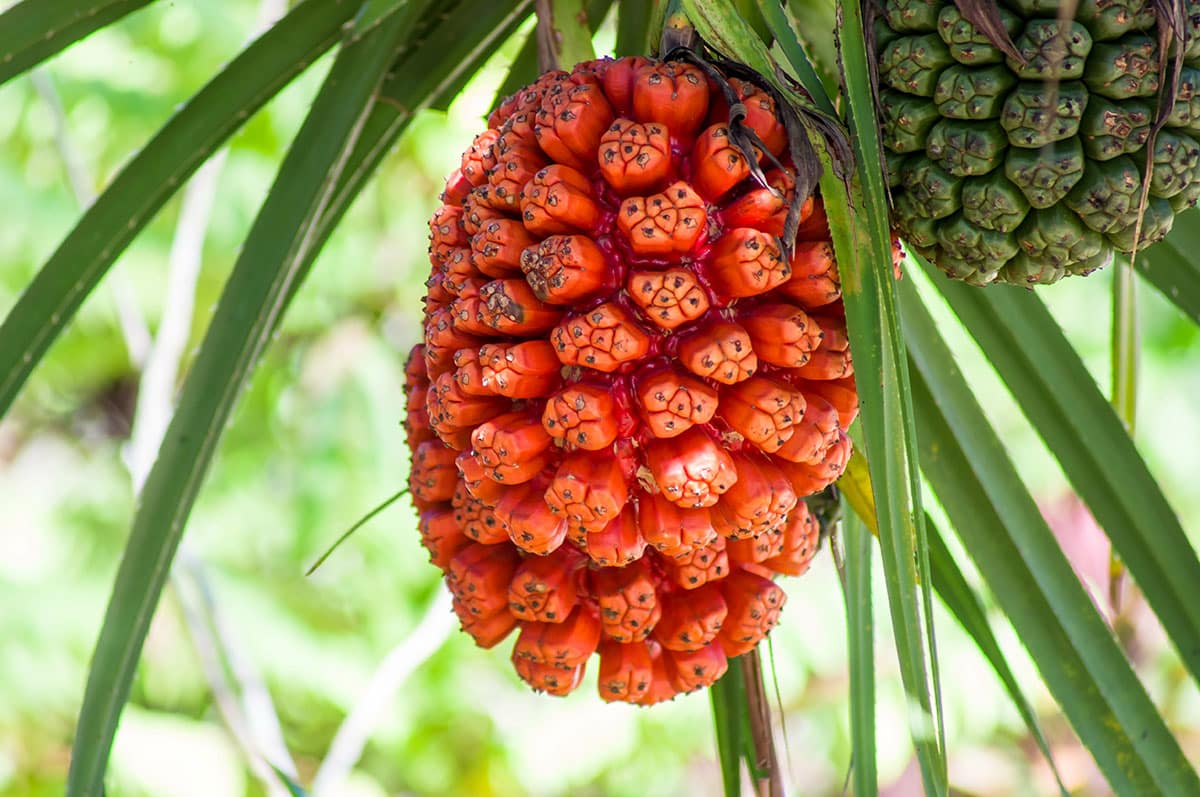
Hala Fruit, also known as the pandanus fruit, is found in tropical regions around the world to include Southeast Asia, Florida, Hawaii, and other Pacific Islands.
Hala are large fruit with numerous small sections somewhat resembling a pineapple. It has a mildly sweet taste said to be a cross between pineapple and mango, and a sweet aroma. Unfortunately, much of the fruit is wasted as you peel it, making it rather expensive by weight.
The hala fruit is commonly used in Pacific Island cuisine. The segments can be eaten fresh, and their sweet flavor makes them suitable for desserts, juices, and syrups. The fruit is also used to flavor traditional dishes and beverages, such as Poi (a Hawaiian staple made from taro that many people think needs a little flavor help) and Kanaka Punch (a Hawaiian fruit punch).
Hardy Kiwi
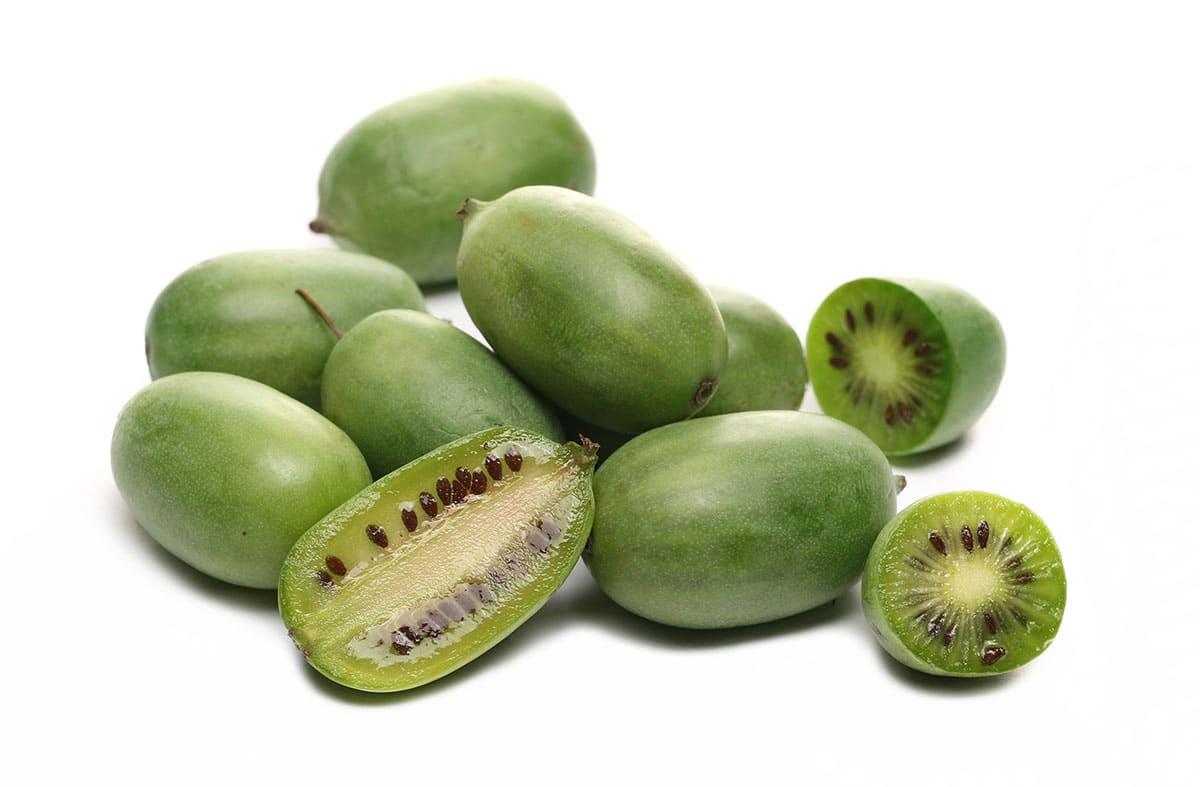
Hardy Kiwi, also known as kiwiberry, are native to East Asia, specifically China, Japan and Korea. They are sweet and tangy like the traditional kiwi we all know, but are smaller and can be eaten whole without peeling. They don’t have the familiar kiwi fuzzy skin, and get their name as they grow well in cold climates.
Hardy kiwis are typically eaten fresh and can be consumed as a snack or added to salads, smoothies, and fruit bowls. Like so many fruits, kiwi are quite healthy and useful in a variety of recipes like Tempeh Tacos with Avocado Kiwi Salsa and Green Smoothie Popsicles.
While hardy kiwis don’t need to be peeled, that isn’t the case with most kiwis, and we can waste a lot of their delicious fruit in the process. Check out our How To Cut A Kiwi (4 Methods With Photos!)
Hawaiian Mountain Apples
Hawaiian Mountain Apples are grown and popular in (wait for it…..) Hawaii. They are not, however, native to Hawaii. They were brought by Polynesian settlers from Malaysia. The fruit is spherical to oblong in shape, crisp, and can be red, pink, or yellow when ripe. It has a delicate, mildly sweet flavor.
These apples are used in various culinary preparations in traditional Hawaiian cuisine including salads, jams, jellies, and desserts. The fruit is sometimes used in poke (a marinated raw fish dish) or pickled for longer shelf life.
There may be as many as 30,000 apple varieties worldwide today, and 2,500 of these are grown in the United States. Apples have been grown and eaten since the Roman Era and quite possibly before that. If you want more information on just a few of the most popular American apples check out our apple nutrition guide.
Hawthorn Fruit
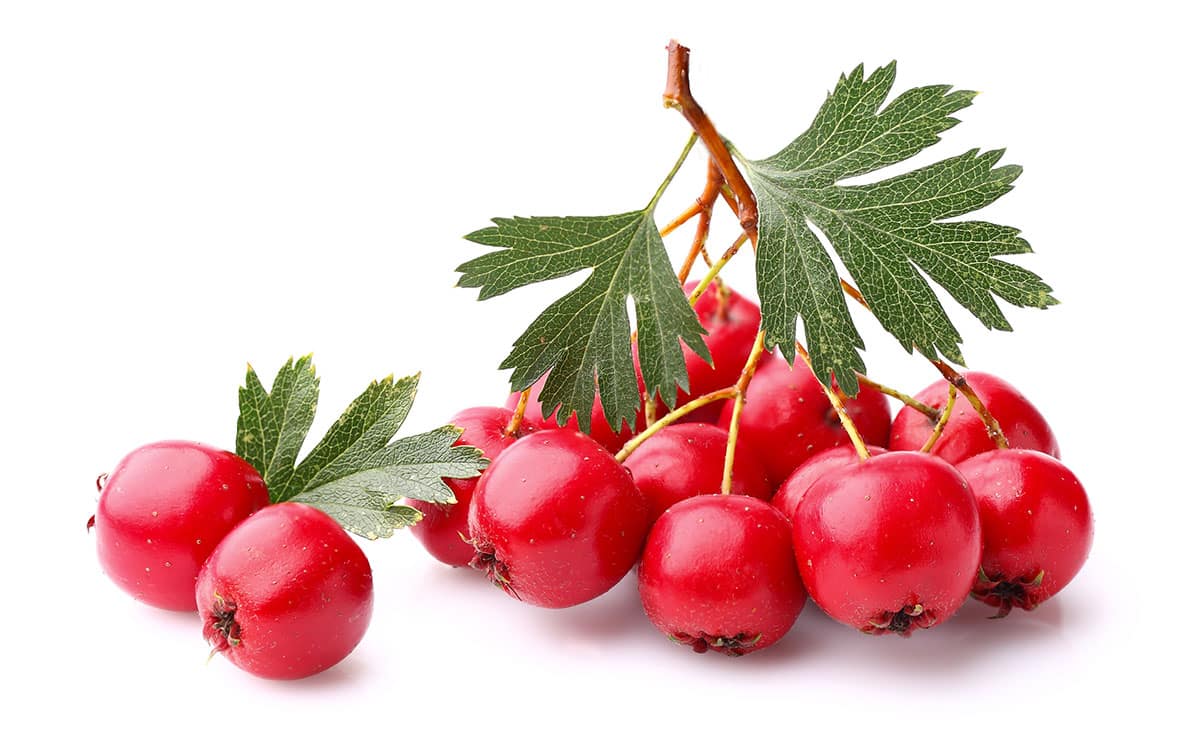
Hawthorn fruit are native to the temperate regions of North America, Europe, and Asia. The fruit is small, round, and usually red or orange when ripe. Hawthorn trees are known for their thorny branches and produce clusters of these fruits.
Hawthorns are often used as a ketchup substitute. We are not quite sure why one would make a ketchup substitute other than to reduce sugar, but this is an intriguing idea.
These berries are sometimes just called Haws and they are known to make good jelly. They are also often used in homemade wines and schnapps as well as pies and sauces. They are quite sour though, so they are generally not eaten raw.
You may find them as an ingredient in supplements or extracts as they are believed to have properties that support cardiovascular health, such as improving blood flow, reducing high blood pressure, and strengthening the heart muscle.
Hazelnuts
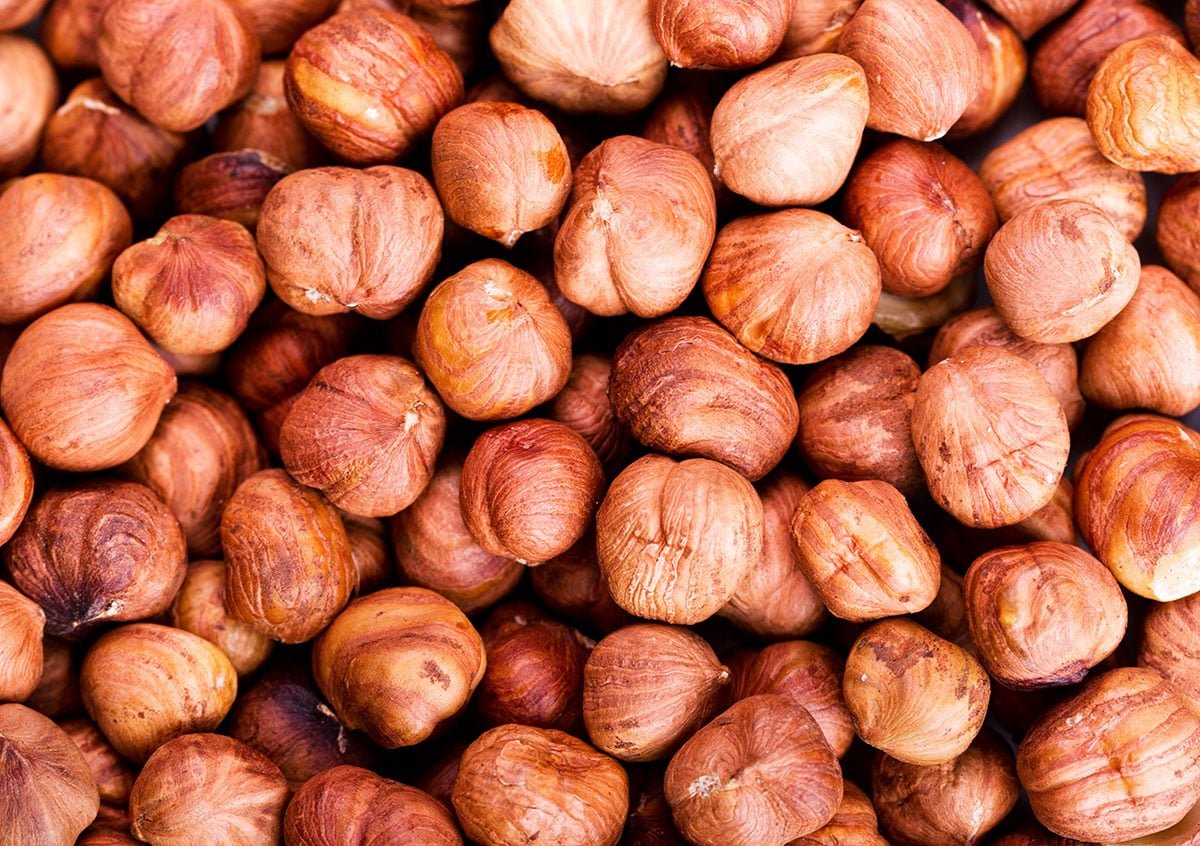
Hazelnuts are grown extensively in Italy, Greece, Turkey, Spain, the UK, and the USA. It is an almost unique nut that is actually considered a fruit. Hazelnuts have a hard outer shell that encloses a kernel or meat, which is the edible part of the nut.
Hazelnuts are widely used in cooking and baking. They have a rich, slightly sweet flavor and a crunchy texture. They can be enjoyed roasted and eaten as a snack, or they can be ground into a paste, known as hazelnut butter, which is used in various desserts, chocolates, spreads, and pastries. Hazelnuts also make a popular ingredient in salads, sauces, and savory dishes.
We believe hazelnut’s real super power, however, is that they are the prime ingredient in Nutella. If you want a guilt free way to use this super power, try our Healthy Nutella Smoothie Recipe.
Hazelnuts have a pretty good nutrition profile with one ounce providing over 4g of protein and a fair smattering of micro nutrients. They are a good source of vitamin E, magnesium, copper, and healthy monounsaturated fats.
Heirloom Tomatoes
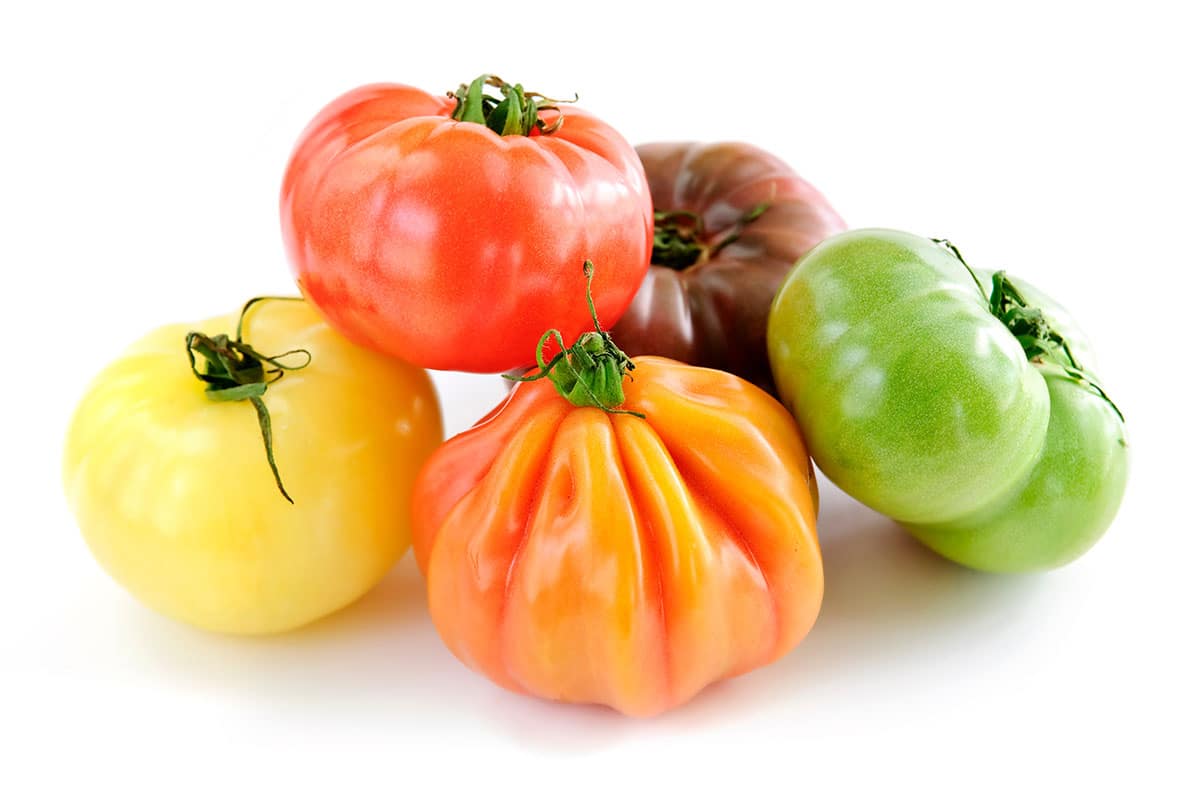
Heirloom Tomatoes are varieties of tomatoes that have been passed down through generations of farmers and gardeners. Unlike commercial hybrid tomatoes, which are bred for uniformity and durability, they are considered purer strains that haven’t been modified as have the many strains of tomatoes available today. To be considered an heirloom tomato, the plant from which the seeds that grew that tomato have to be traceable back to 1951 or before.
Many heirloom tomatoes are sweeter than other varieties but lack the consistently uniform red color derived through genetic manipulation. Heirlooms are often grown and sold locally because they aren’t bred to be resistant to transportation and for long shelf lives. These tomatoes are popular in salads, sandwiches, salsas, and sauces due to their distinct flavors and textures.
If you want to know more about other varieties of common tomatoes, check out our tomato variety guide.
Highbush Blueberries
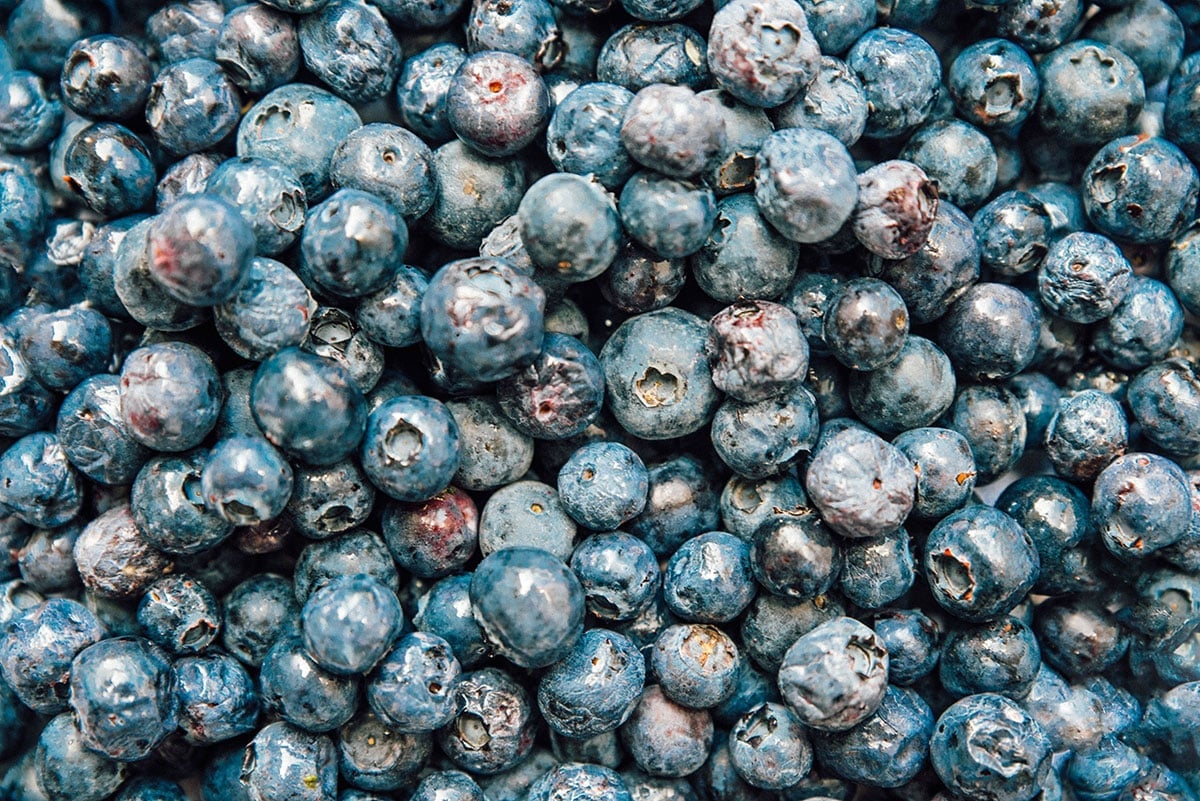
Highbush Blueberries are the variety you find in the grocery store. Blueberries are one of only three berries native to North America: blueberries, cranberries, and Concord grapes. So what is a berry? It’s a fleshy fruit produced from a single flower with no barrier between seed and pulp. That’s the botanical definition any who. And interestingly enough, by this definition, strawberries are not berries, while bananas are. Things that make ya go hmmm.
Blueberries are, of course, an infinitely useful fruit in the kitchen. They are great in pies, jams, smoothies, fruit salads, or just eaten by the handful. Blueberries are also off the charts healthy. They contain strong anti-inflammatory compounds like anthocyanin as well as loads of vitamin C.
Even more fun fact? Dogs can also eat blueberries! And if you want to know more about blueberries for humans, check out our blueberry nutrition guide.
Highbush Cranberries
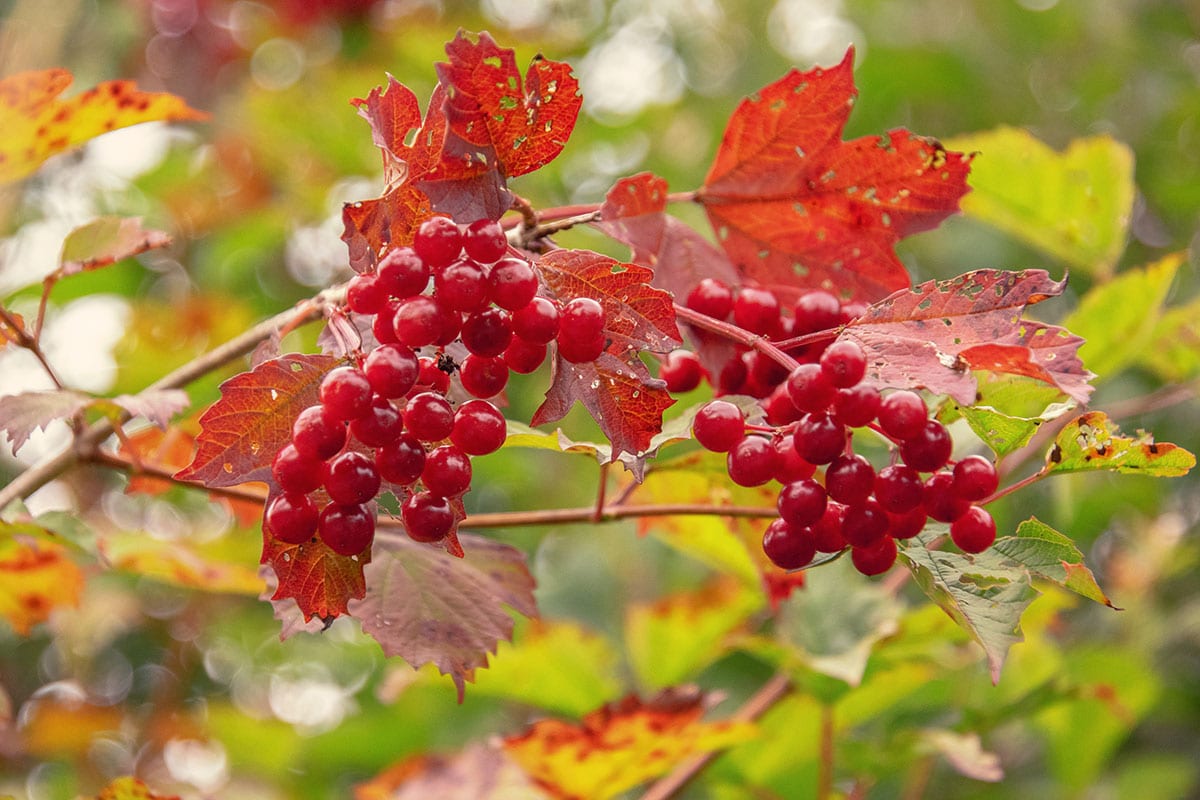
Highbush Cranberries are not actually cranberries. They look and taste like cranberries, but are really from the honeysuckle family. They grow on bushes that range from 8-15’ tall, so they aren’t harvested by flooding their field as lowbush cranberries so famously are.
Highbush cranberries are known for their tart flavor, similar to cranberries. They can be used in various culinary applications, including making sauces, jellies, jams, and pie fillings. These fruits are often used as a substitute for traditional cranberries. Additionally, highbush cranberries can be fermented into wine or brewed into herbal teas.
Click here for the everything guide to cranberries, and for a treat as good as its name try Cranberry Bliss Bites.
Himalayan Mulberries
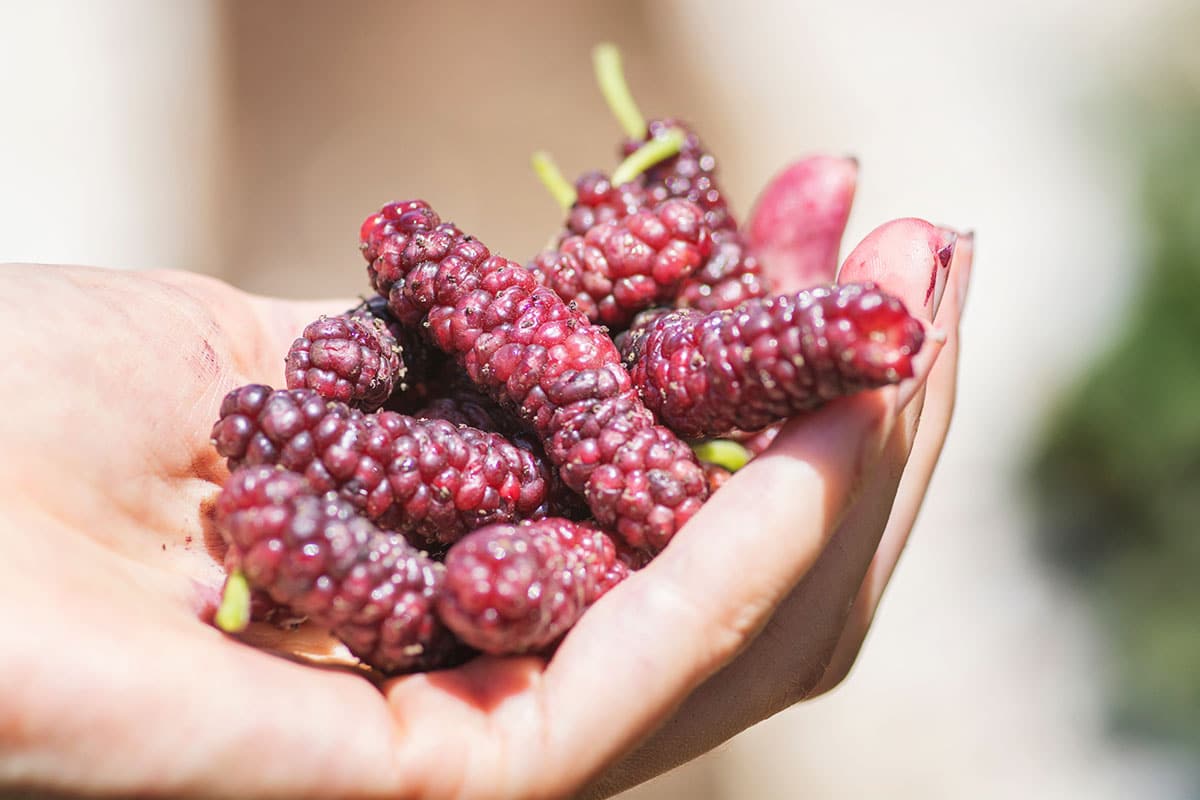
Himalayan Mulberries are not surprisingly native to the Himalayan mountains, but have spread across India and China. These fruits grow on deciduous trees that can reach heights of up to 40 feet (12 meters). Himalayan mulberry trees are known for their heart-shaped leaves and sweet, juicy berries.
These berries are consumed both fresh and dried. They have a rich, sweet flavor and are often used in desserts, jams, jellies, and syrups. Dried mulberries can be eaten as a snack, or used as an ingredient in baked goods or trail mix. Himalayan mulberries are also known for their nutritional value, being a good source of vitamins, minerals, and antioxidants.
Hog Plums
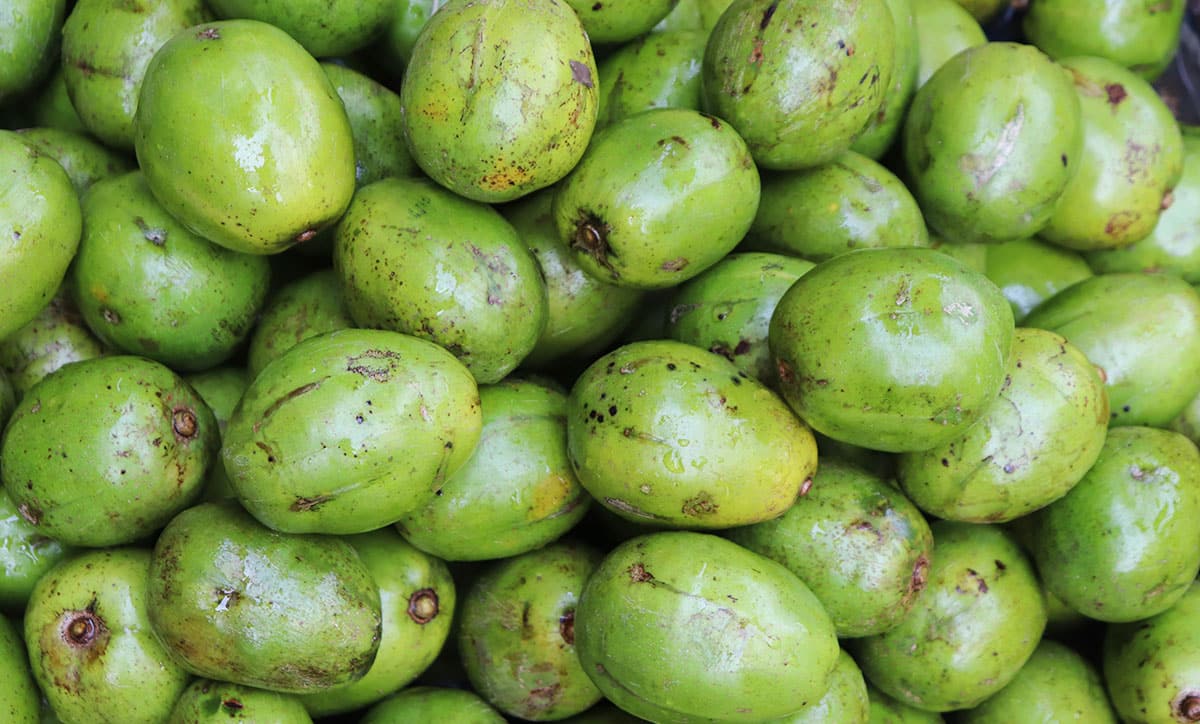
Hog Plums, also known as Yellow Mombin, are native to the tropical Americas, and grow on trees reaching 60’ high. Unlike traditional plums they have a tough spiny exterior, so they aren’t normally eaten right off the tree.
Hog plums are, however, commonly used in regional culinary cuisines. The ripe fruit has a sweet and tangy flavor, often described as a blend of mango and pineapple. Hog plums are also used in juices, smoothies, jams, jellies, and ice creams. In some cultures, the unripe fruit is pickled or used to make chutneys. Additionally, hog plums are sometimes used as a souring agent in savory dishes.
Honeyberries
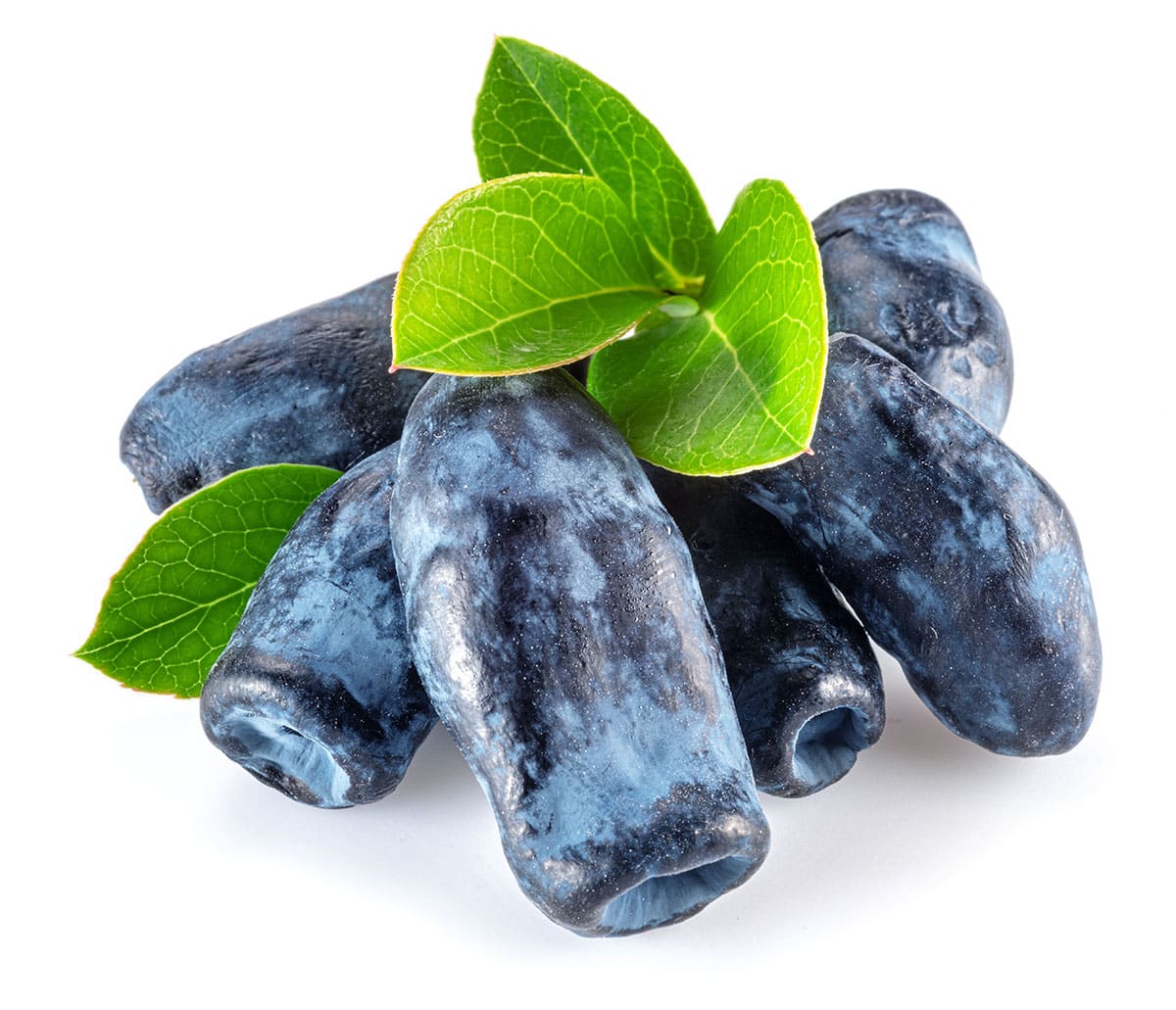
Honeyberries look rather like an elongated blueberry, but are actually from a whole different plant family. The plants are native to Russia, and have been grown there for centuries. These very cold tolerant berries taste like something between raspberries and blueberries.
Honeyberries have a unique flavor profile that combines sweetness and slight tartness. They can be eaten fresh as a snack or used in various culinary applications. Honeyberries are used in baking, making jams, jellies, pies, and other desserts. They can also be blended into smoothies or used as a topping for yogurt or ice cream. You can pretty much use these in place of blueberries if you like the flavor. For something unique try them as a substitute in this Blueberry Grilled Cheese Recipe.
Honey Crisp Apples
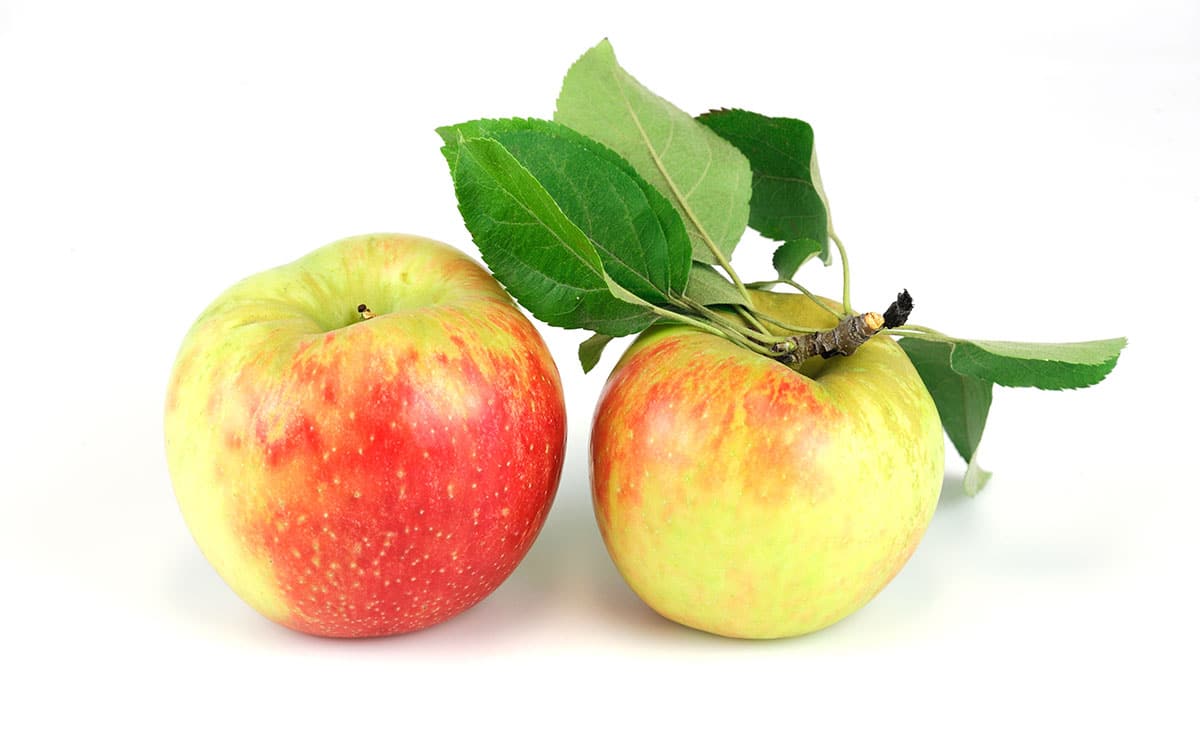
The Honey Crisp apple is a relatively new apple variety that was developed by the University of Minnesota. It originated from a crossbreeding program in the 1960s, where researchers aimed to develop a hardy apple variety with excellent flavor and texture.
Honey Crisp apples are known for their crisp texture, juiciness, and balanced sweet-tart flavor. They are commonly enjoyed as a fresh eating apple due to their refreshing taste. They also work well in salads, pies, and other baked goods. The apples are versatile and can be used in both sweet and savory recipes, making them a popular choice for all sorts of recipes. They are an excellent choice for this Easy Apple Galette Reipe.
Honey Crisp Apples are just one of the 2,500 varieties of apples grown in the USA. There may be as many as 30,000 apple varieties worldwide today, and apples have been grown and eaten since the Roman Era and quite possibly before that.
Honeydew
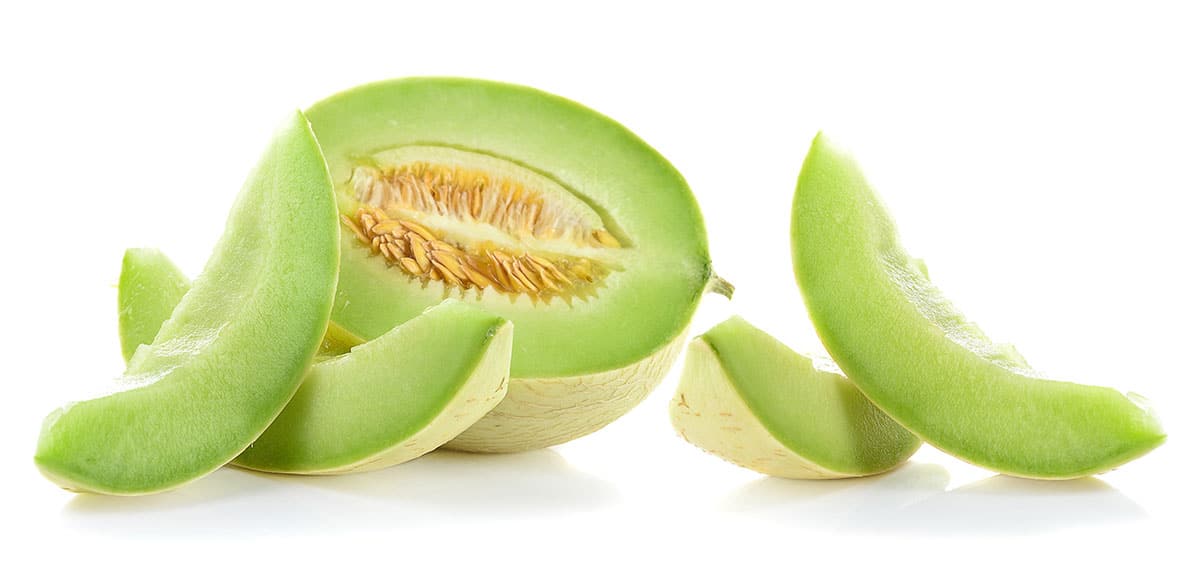
Honeydew is just a wonderful fruit. They have been eaten for thousands of years and were once considered a sacred food in Ancient Egypt though their origin appears to be Persian (modern day Iran). Today they are grown almost worldwide.
Honeydew melons are renowned for their sweet and juicy flesh. They are typically consumed fresh and can be enjoyed on their own or as part of fruit salads, smoothies, or desserts. Honeydew is also sometimes used in savory dishes, such as salads or chilled soups, to add a touch of sweetness and refreshing flavor. It goes great on this Curried Melon Salad.
At about 10 calories an ounce it is fairly low calorie fruit loaded with vitamin C.
Honey Locust
Honey Locust is a tree native to America also known as the thorny locust. As its name suggests it presents a formidable array of thorns to make picking a challenge. It grows in Eastern Texas and as far north and east as Pennsylvania.
As the name “honey” suggests the pulp of this fruit is rather sweet and the sweet, sticky substance found in the pods, known as honey locust gum or honey locust thornless honey, was used by Native Americans as a source of food and a sweetener. You won’t find many recipes for this fruit though it is said to make a nice tea.
Honeysuckles
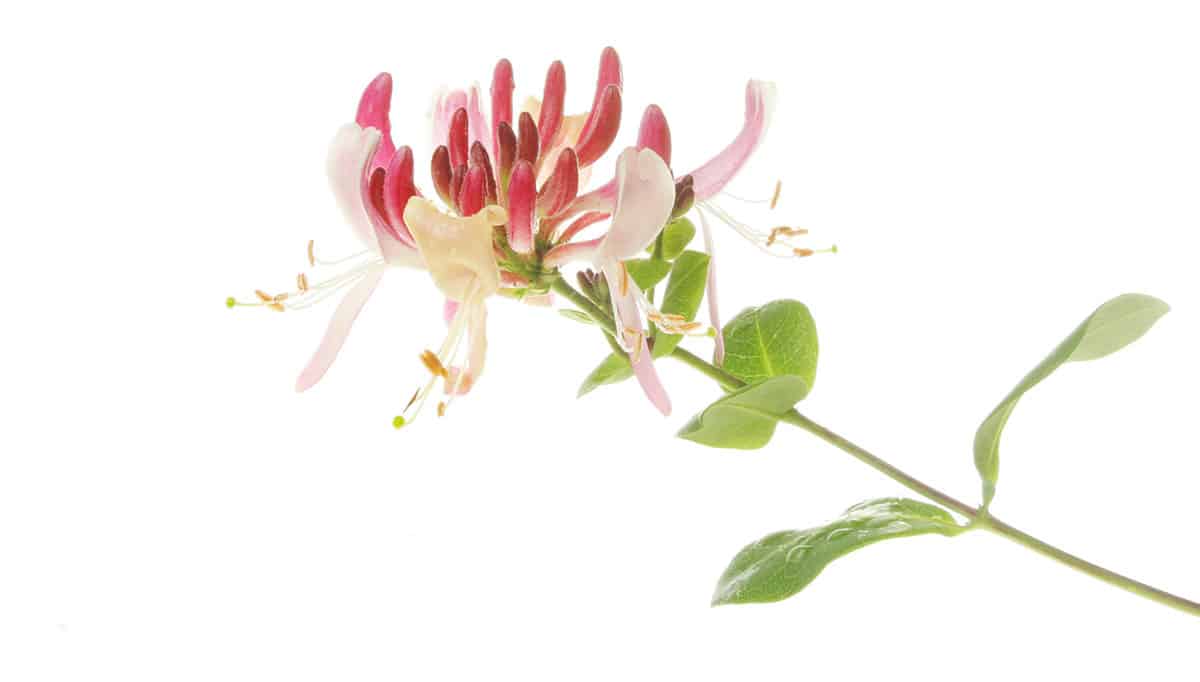
Honeysuckles are native to the northern areas of North America and Eurasia. There are about 180 known species, so they come in a variety of colors but mostly red, blue and black.
Honeysuckles are known for their fragrant flowers, which are often used in perfumes, potpourri, and herbal teas. Some honeysuckle species produce edible berries that can be eaten raw or used in jams, jellies, or syrups. However, it is important to note that not all species of honeysuckle produce edible berries, and some may even be toxic. It is essential to identify the specific species and ensure its suitability for consumption before using honeysuckle berries.
Horned Melon
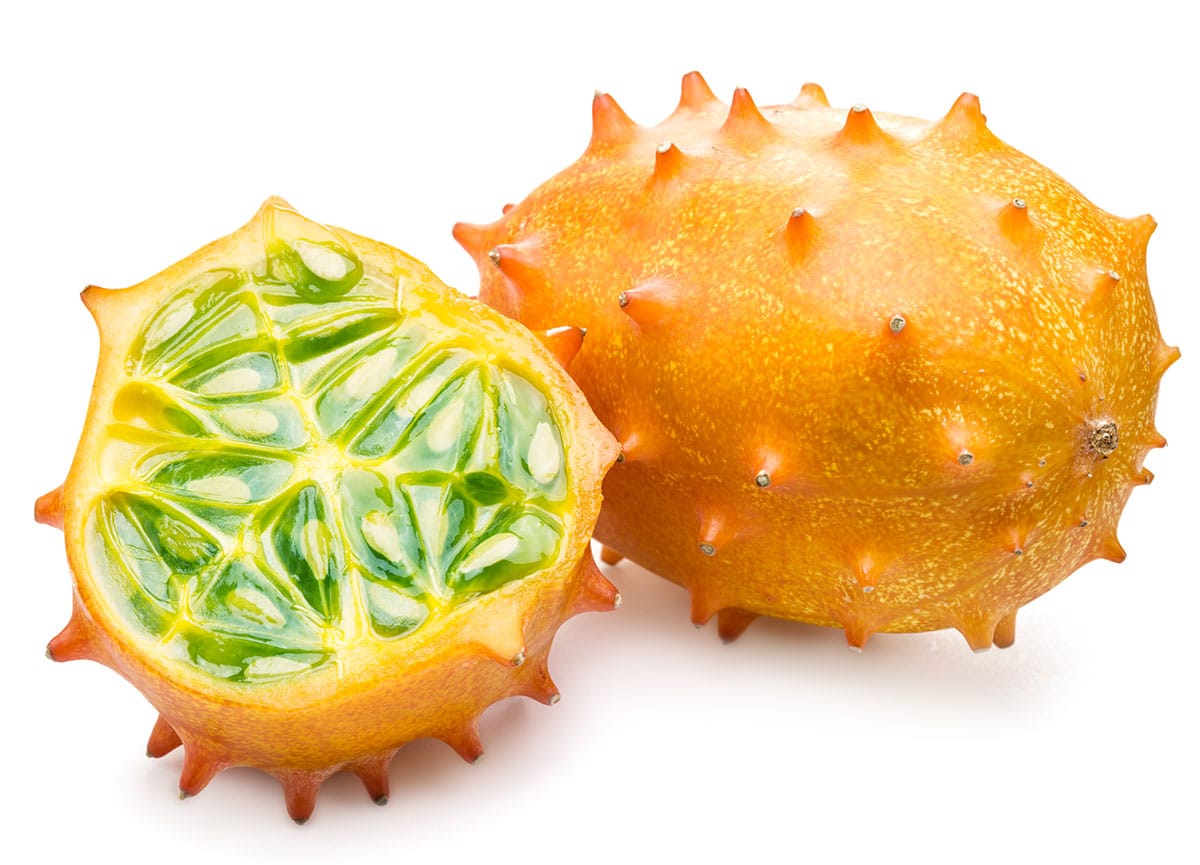
Horned Melon, also known as Kiwano melon or African horned cucumber, is an exotic and odd-looking fruit grown in Central to Southern Africa.
The horned melon has a distinct appearance with its bright orange skin covered in spikes or “horns.” When ripe, its flesh is green, jelly-like, and filled with numerous edible seeds. The flavor is often described as a mix of cucumber, banana, and lemon. Horned melon is typically consumed raw, and its unique taste makes it a popular addition to fruit salads, smoothies, and desserts. Some people also use the fruit as a garnish or in cocktails for its decorative appearance.
Horned melons have become more available in the USA at international markets in recent years. They are worth giving a try should you find them.
Huckleberry
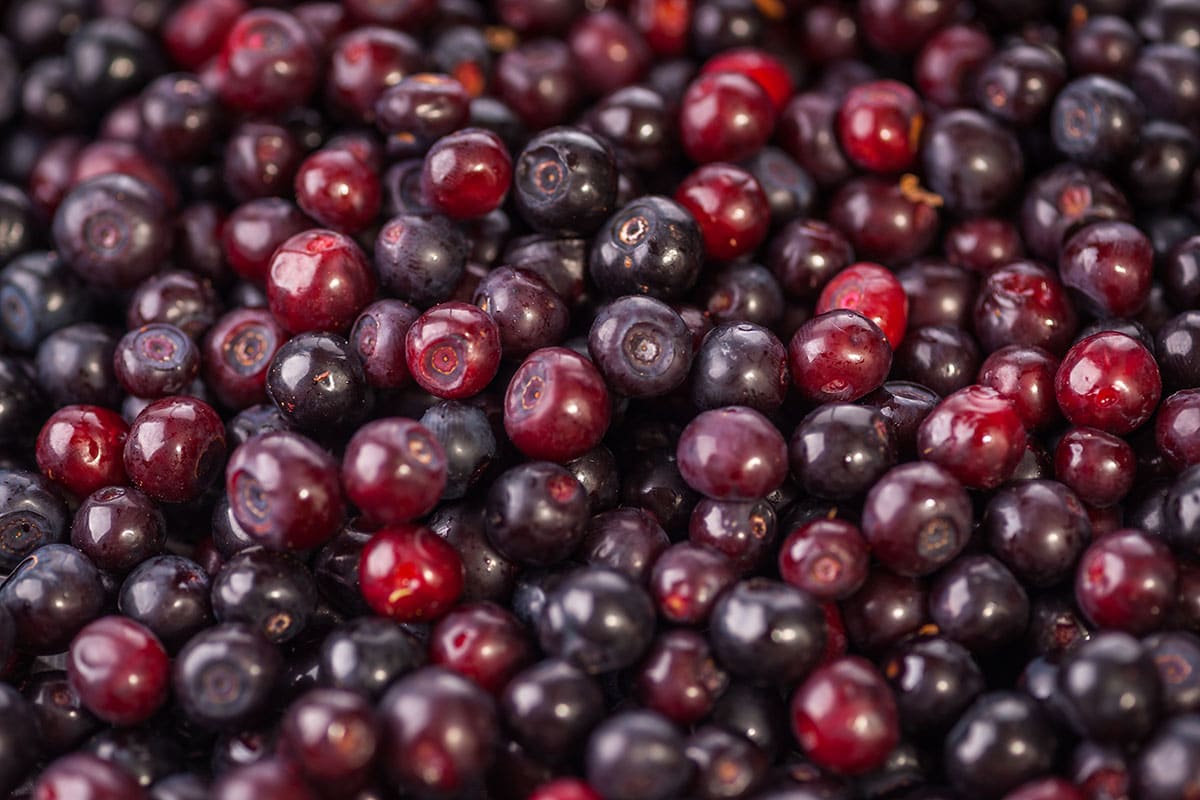
Huckleberries are similar to blueberries, and are often found growing wild in the Pacific Northwest. They are found primarily in mountainous regions, forests, and acidic soils. There are several species of huckleberries, including the black huckleberry, red huckleberry, and mountain huckleberry.
Huckleberries are often harvested in the wild and have been used by indigenous peoples for centuries. They have a sweet and tangy flavor, similar to blueberries but with a more intense taste. Huckleberries are commonly used in baking, jams, jellies, syrups, and pies. They can also be eaten fresh or added to cereal, yogurt, pancakes, and ice cream for added flavor. Due to their popularity, huckleberries are sometimes cultivated, and you may find them at farmer’s markets or specialty stores.
Huito
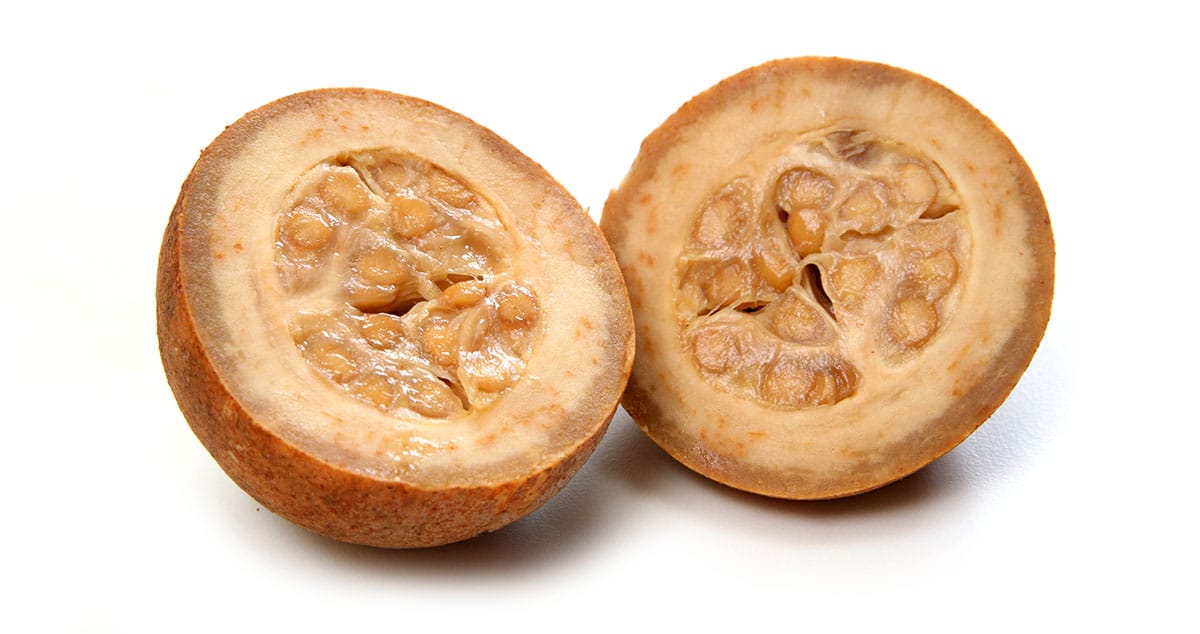
Huito, also known as genipap, grows in the rainforests of South America, the Caribbean, and Mexico. The fruit is large, oval-shaped, and turns from green to dark purple or black when fully ripe.
The huito fruit has a thick, leathery skin and a juicy, acidic pulp. It is primarily used for its dyeing properties. When the fruit is cut open, its flesh releases a dark blue-black juice that has been traditionally used by indigenous communities as a natural dye for body art, textiles, pottery, and wood. The dye from huito fruit can create temporary tattoos or body decorations. In addition to its dyeing uses, huito fruit is occasionally consumed in certain regions, either raw or used to make juices, jams, or ice cream.
Husk Tomatoes

Husk Tomatoes are also called tomatillos, ground cherry, Mexican green tomato, and Mexican ground cherry, and are native to the Americas.
Husk tomatoes are small, round fruits that grow inside papery husks thus the name. They have a sweet and tangy flavor, reminiscent of a combination of pineapple, tomato, and citrus. The fruits are usually consumed raw and can be eaten directly from the husk or used in various culinary applications. Husk tomatoes are commonly used in salads, salsas, jams, pies, and desserts. They can also be dried or used to make preserves and sauces. In some regions, husk tomatoes are enjoyed as a snack or used as a garnish for cocktails and dishes.
Hyuganatsu
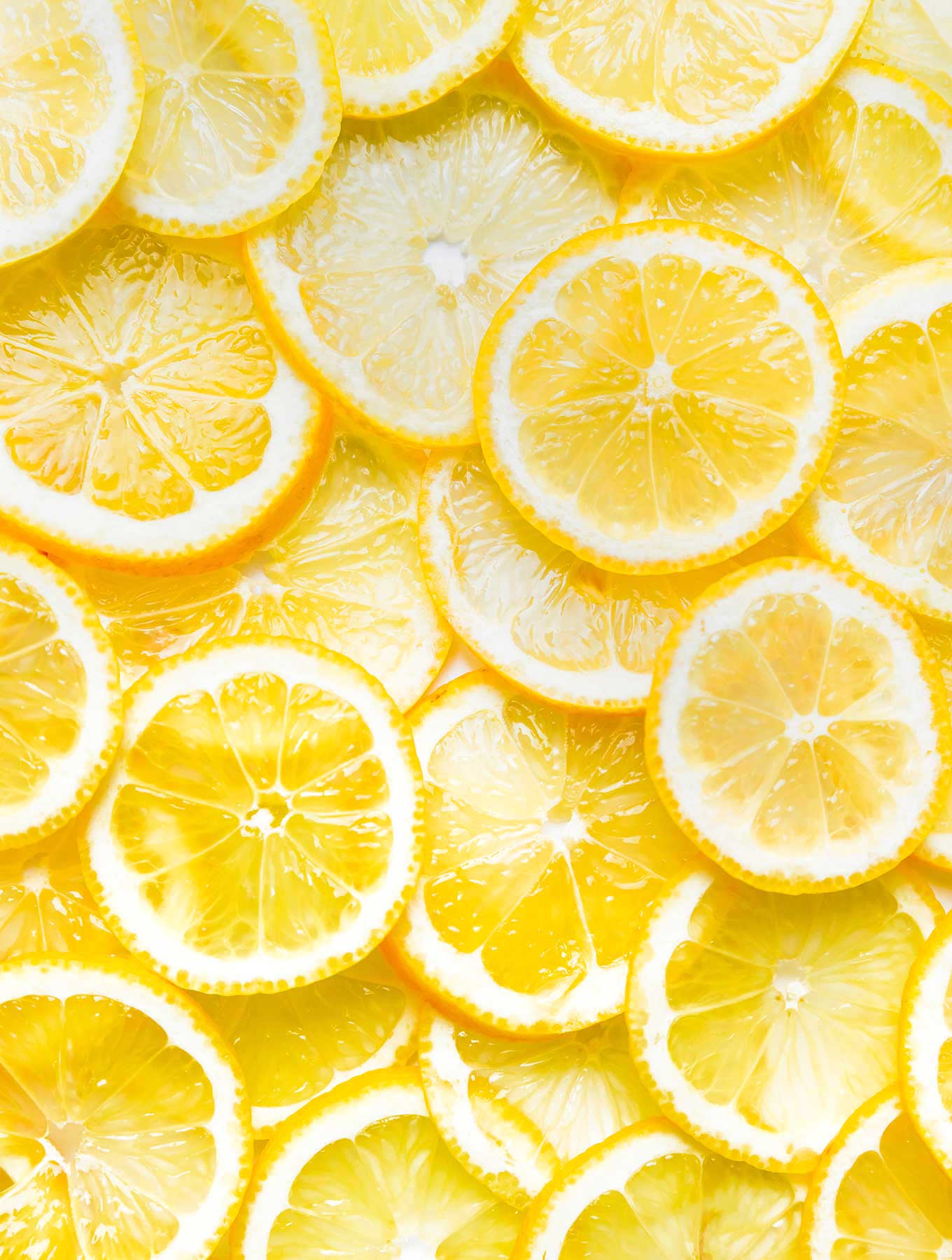
Hyuganatsu is a yellow citrus fruit grown in Japan. Hyuganatsu is a hybrid fruit, resulting from the crossbreeding of the pomelo and the tachibana orange.
The Hyuganatsu fruit has a distinctive appearance and flavor. It is round and large, similar to a pomelo, with a thick, pale yellow rind. The inner flesh is translucent and segmented, resembling a grapefruit, but without the bitterness. The flavor of Hyuganatsu is uniquely sweet and tart, with a refreshing citrus taste and floral undertones.
Hyuganatsu is primarily used for its juice, which is highly prized in Japan. The juice is rich in Vitamin C, and has a distinct tangy flavor that makes it a popular ingredient in various culinary applications. It is commonly used in desserts, such as sorbets, sherbets, and fruit salads. The juice can also be used in cocktails and as a flavoring in sauces and dressings.
While it is primarily consumed within Japan, Hyuganatsu has gained some international recognition, and can occasionally be found in specialty stores or international markets.
Trivia Answer
The Answer is B, tomatoes. The world grows 170 million metric tons every year followed by bananas at 116 million tons, Apples at 76 million and oranges at 73 million.
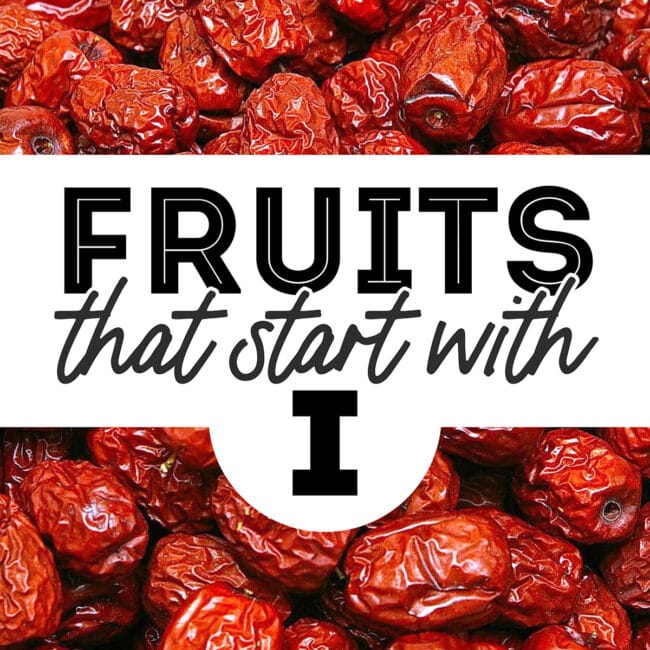
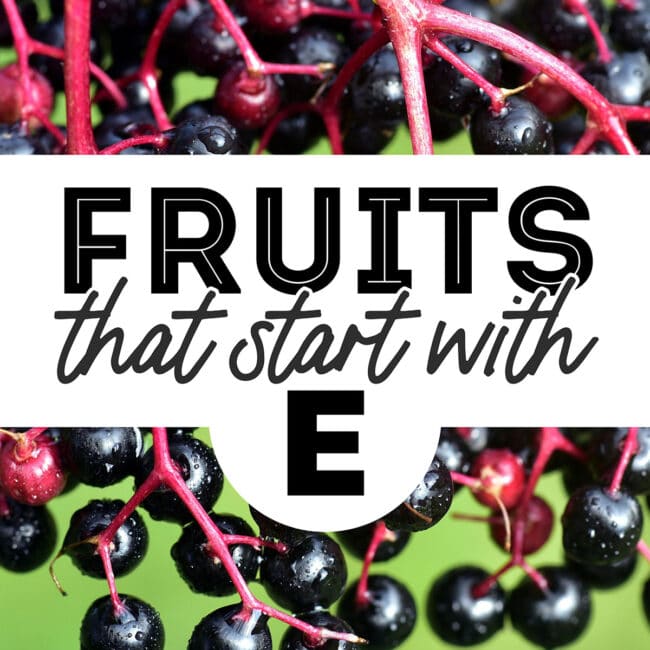
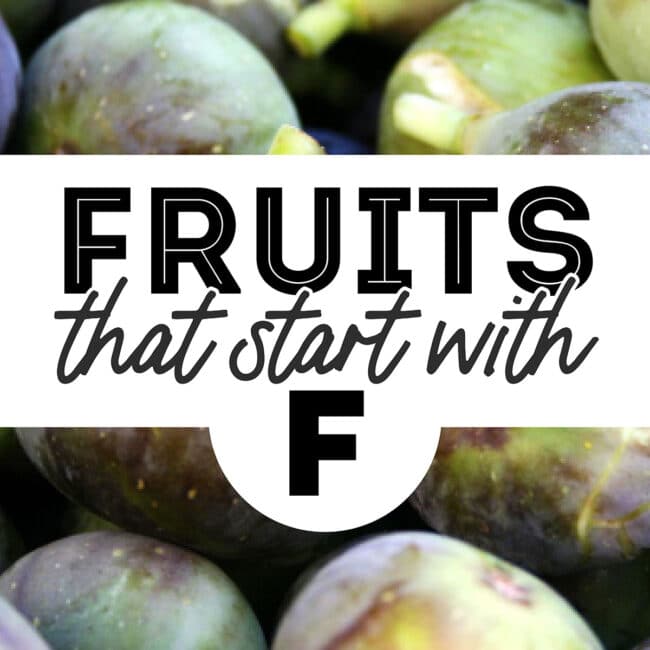
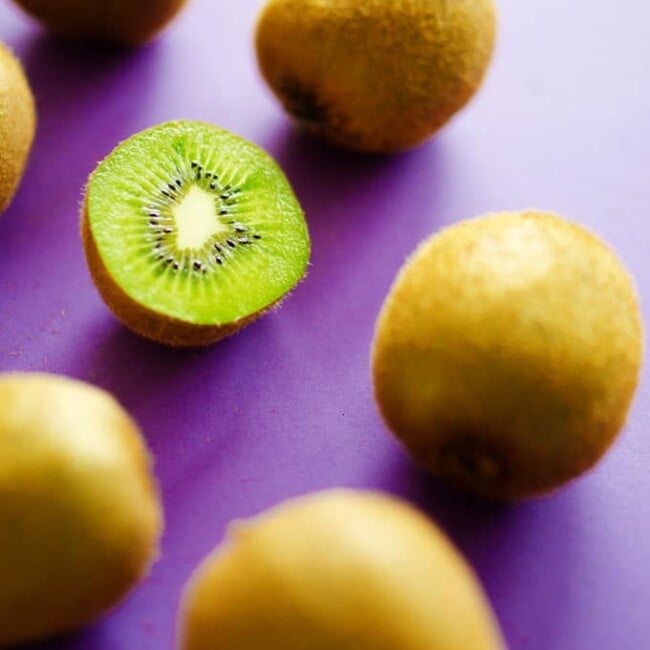
Leave a Comment